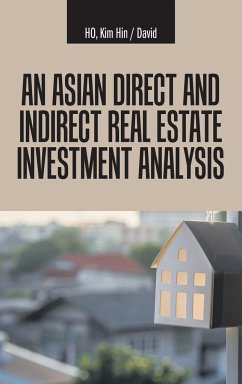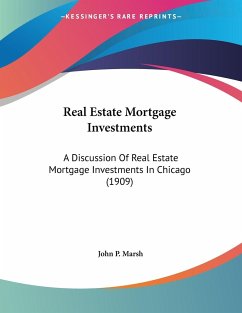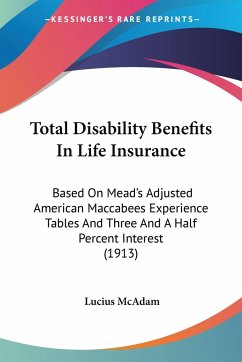
Direct Real Estate Duration Risk, Total Risk and the Residential Mortgage Life Insurance (Rmli)
Versandkostenfrei!
Versandfertig in 1-2 Wochen
15,99 €
inkl. MwSt.
Weitere Ausgaben:

PAYBACK Punkte
8 °P sammeln!
Chapter 1 compares the direct real estate (DRE) duration Beta estimates with the time-varying Beta regression estimates, for each of the three prime DRE sectors. Except for the prime office sector, both the duration Beta and the time-varying Beta profiles follow the same general trend. The luxury residential sector and the prime office sector are inclined to move in opposite direction. However, the prime office sector shows greater volatility in the duration Beta compared with the time-varying Beta. Chapter 2 demonstrates overall that in the presence of a set of limited available information c...
Chapter 1 compares the direct real estate (DRE) duration Beta estimates with the time-varying Beta regression estimates, for each of the three prime DRE sectors. Except for the prime office sector, both the duration Beta and the time-varying Beta profiles follow the same general trend. The luxury residential sector and the prime office sector are inclined to move in opposite direction. However, the prime office sector shows greater volatility in the duration Beta compared with the time-varying Beta. Chapter 2 demonstrates overall that in the presence of a set of limited available information comprising a direct real estate (DRE) asset's passing (annual) rent, the current rental value, the expected yields and the yield-growth movements from a DRE sector analysis, conducted by a DRE consultancy or service provider, the risk-free rate and the lease maturity period; it is readily feasible to model and rigorously estimate several key risk measures and the expected total returns (TRs). Such a model and its estimations can be achieved through an ex-ante integrated DRE risk-measure model, which innovatively combines the bond duration-convexity risk conception, the Beta distribution function, and the DRE equivalent (rental) yield valuation conception. Finally, Chapter 3 looks at the structural and behavioural experience of the prepayment risk for the underlying mortgages of China's rapidly developing residential mortgage life insurance (RMLI) market. A reliable private prepayment dataset for China's commercial center - the city of Shanghai - is deployed. Chapter 3 estimates the relationship between RMLI's underlying mortgage prepayment risk and the observable macroeconomic factors, loan specific factors and borrower specific characteristics. A Cox proportional hazard model is adopted for this purpose. Chapter 4 summarises the book's findings and highlights the contributions and recommendations made













